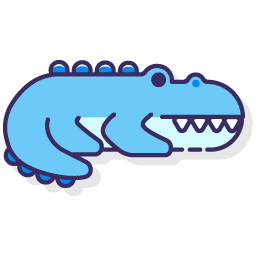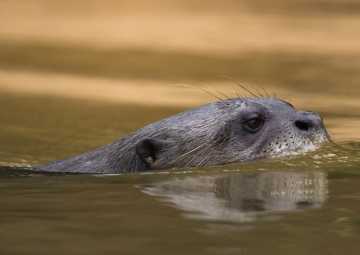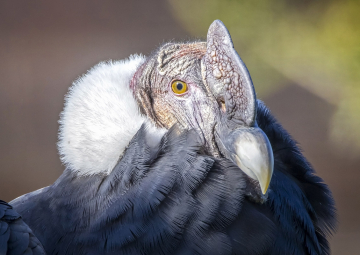Marine mammals
Shape and color discrimination and match to sample training in gentoo penguins (pygoscelis papua)

Anna P. Svensson and Paola Cuevas, Ski Dubai
Anna’s career started in 2006 with an internship at a rescue and rehabilitation center for marine animals in New Zealand. The internship progressed to a full time position continuing working with dolphins, sea lions, penguins and other marine birds.
Later an opportunity to join a project in Dubai training Antarctic penguins. Since then she has also had her career taken to other parts of Asia, Europe and her latest project in India integrating a colony of penguins to a new facility.
Paola Cuevas is a veterinarian and animal trainer, with over 17 years of experience. With a passion for traveling and learning she has been able to live and work in 5 different countries thanks to career opportunities. Paola has had the privilege of working with a variety of species but specializes in marine animals under human care mostly cetaceans, pinnipeds and penguins. Through this amazing research training project Paola was very happy and proud to be able to show the world that Penguins are so much more than just cute and clumsy birds. Currently Paola works for a Consultancy Company in Asia.
Many years have passed since we presented our project at IMATA conference in the Bahamas 2015. Some of the best times of my life, so many good memories and achievements.
I made many friends during this time and some opportunities took me elsewhere in my career.
After 4 years at Ski Dubai, I left the penguins in 2017 to continue my career somewhere else but this time with dolphins. I worked a few years in various countries and I’m now living through COVID epidemic like everyone else. The Epidemic for me, has been a phase in life I learned a lot about myself and it brought me back to an opportunity to work with penguins again. I have always felt that penguins have a very special place in my heart. Not difficult to understand, since I have over 7 years’ experience working with them.
I was offered to consult on a new project with African Penguins. It was not difficult for me to make the decision to do it. This time I moved country in the middle of the epidemic to settle in India.
I wish one day to do more research on the project I left behind. It has always, since then been in my interest to know more about the penguins vision and cognition. Let’s see where this opportunity can lead me. For the people that don’t know what I achieved back in 2015, here is the story.
I remember it well, it was during an encounter with the penguin program and a little boy asked me if the penguins could see colors like we do. I was very honest with him and said that I assumed they could see colors but I wasn’t completely sure, so I challenged myself and told him I would find out for him. I told him to come back in a couple of months but I never saw him again. I wish I could show him what we achieved, I am sure he would be proud. He must be a teenager/young adult by now.
I spoke to a colleague of mine and we decided to team up and do this together. First we had to do some research about what was already out there about the penguins and their vision.
We found many statements and studies that mentioned the following:
“Penguins are not color blind. They can see in all colors, like we can. They see in color but their eyes are adapted to see better in a blue/green spectrum of light” - Fanpop. “Penguin facts”
“Underwater, eyes also see color differently, because suspended particles and other substances in the ocean filter out most red light”. Martin tested penguins' color vision, he discovered that they do not see red. They do see violet, blue and green. Even though they spend much of their life on land, their eyes are adapted to the underwater world. - Martin Graham Wolkomir,J. and Wolkomir,R. (1991)
“We have observed that penguins are more accurate when it comes to viewing the colors from the center of spectrum, i.e. bluish green colors, while the rest of the colors for them is pretty much still a blur” - Chatterjee, S. (2014, July 21)
We also found a scientific paper about anatomical studies of the penguin retina stating:
“The data suggest that the penguin is trichromatic, with the potential for good wavelength discrimination in the blue-green region of the spectrum from below 400 nm to about 550 nm.” - Bowmaker and Graham, 1984
I remember we even contacted one of the authors, and he told us the study he made was a very long time ago and he was interested to hear what we could achieve by training the penguins instead of studying their retinas. I did write him a message after the project was finished and sent him the result, but I never heard back from him either.
As both me and my colleague Paola had been working with various species of animals before, we knew many of them had performed some kind of discrimination training with colors and shapes before, but no one had ever tried it with the penguins, so we were up for the challenge.
At the time, Ski Dubai was one of the only places that officially did training with the penguins, so we already had the advantage of some basic training.
We chose our favorite gentoo penguins for the project. We both agreed that Gentoo penguins would be more suitable for this project than King penguins, as we found the Gentoo penguins more eager to learn and more motivated than the King penguins.
Lollipop, Sneezy, Pebbles, Toby and Speedy were the names of the penguins, they were adorable and I miss them a lot, even today. Working so close with these amazing penguins and really trying to get into their “brains” brings you very close to them, and they become your best friends. We spent more time with these penguins than with our family and friends.
We decided to start with the colors, but very quickly introduced the shapes and we decided to divide the penguins into two groups. One group to discriminate between the colors and the other to discriminate between geometrical shapes.
Everything was very basic, we didn’t have much of a pre-plan or material to use in the beginning. We simply printed two dimensional images with black outlines geometrical shapes and colored squares and laminated them. The colors we used were Yellow, Red, and Blue. The geometrical shapes were a Triangle, Circle and a Square.
We trained Toby to discriminate the Yellow color, Sneezy the red and pebbles the color blue. Lollipop for the triangle , Speedy for the circle.
We were so excited to start this project as we noticed the penguins learnt very quickly what was expected from them. To gain time we introduced it into the daily encounter programs and presentation we had at Ski Dubai.
{youtube} https://www.youtube.com/watch?v=wKKxwljHmy0 {/youtube}
The steps we did was very simple, like in any training.
The first you have to work on is
-
Desensitization to the new object
-
Target on the new object
-
Target the object in various locations (A-B)
Once they had that established, we introduced a second color or shape. Then the discrimination training begun. They did pick up the idea of what we wanted pretty quickly again and a 3rd color or shape was introduced.
Then it became a bit more challenging, especially for Lollipop that seemed to struggle with the discrimination between the square and the triangle. First, Lollipop only had the circle and triangle, which seemed to be no problem at all for Lollipop to discriminate between.
We attributed the confusion between the Square and the Triangle to the similarity of the straight lines that composed them, so we regressed a step and created a stronger history of reinforcement discriminating between the square and triangle and then introduced the 3rd one (circle) again.
This project seemed to go fine and we were ready for an even bigger challenge. We were asking ourselves, are the penguins able to understand the concept of match to sample?
We put some ideas together and for one group we continued with the two dimensional images and created some A4 stands with different shapes and some A4 laminated papers with the same motives on. To the other group we introduced three dimensional object.
Again same as before, we started with
-
Desensitization to the new objects and graphs.
-
Target on the objects pointed
-
Introduction of the sample as a SD (discriminative stimulus)
-
Attention to the sample was reinforced
-
Introduced a station to stay and wait to observe the sample stimulus
-
Taught them a verbal cue of “match” to initiate the targeting behaviour.
-
Starting only with one object/graph
Once that was established, a second object/graph where then introduced, not as easy this time to teach them and it took a lot of training and mistakes to get them to understand the concept. There were many funny moments here to try to understand how the world looks like from the point of a penguin but it was so much fun! I believe, that for successful training you need to have fun and not push your animal too much, you both need to equally enjoy the session, working together to achieve desired goals. IF you fail, try something else, think outside the box. Like I always try to say, your imagination is your only limitation.
We created an abstract and sent it to IMATA conference 2015, we got accepted and presented it at the conference later that year. Below this article, I will share the link to a full presentation about the project on YouTube. I hope you will enjoy watching it. DON’T miss the end of the video!
We asked ourselves again, what else can the penguins surprise us with? How much do we really know about the penguins? For so many years the dolphins have been trained for various discrimination and concepts and we have discovered so much about dolphins through training.
This is still just the beginning with the penguins. I have seen many facilities that have now introduced training with their penguins since we started back in Ski Dubai. Now getting back with penguins I can’t wait to discover more about these little black and white creatures.
The entire project took about 1 year from start to finish. With penguins you need to have patience and a brain to think outside the box, it’s about being creative. Don’t give up! Also, another thing worth mentioning is that penguins eat (depending on the species) around 0.3 to 1 kg of fish a day! Not much fish to use as reinforcement. What we discovered at Ski Dubai, is the value secondary reinforcement. The penguins just loved the attention of their trainers. The secret, once again, is to HAVE FUN!
We wanted to thank the Wezooit team very much for allowing us to share our work with all readers.
The full presentation on “Shape and Color Discrimination and Match to Sample Training in Gentoo Penguins” is available for viewing on YouTube
{youtube}https://youtu.be/TwCysdTwslc{/youtube}


















